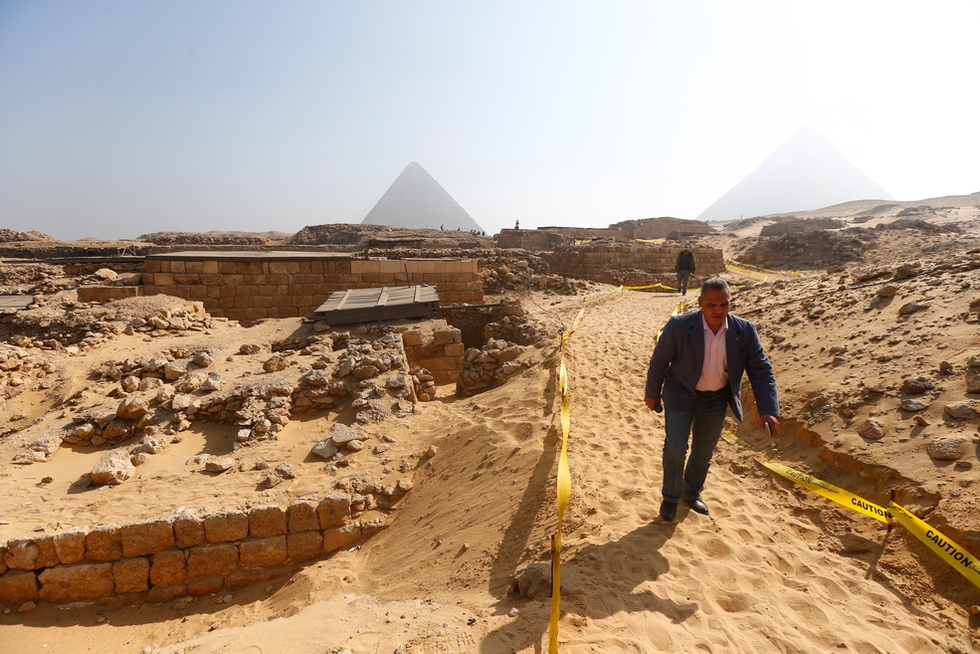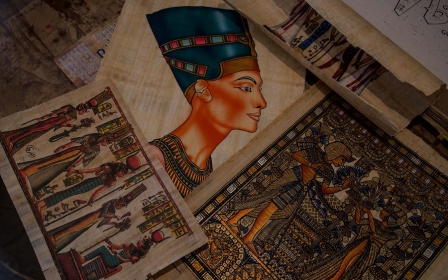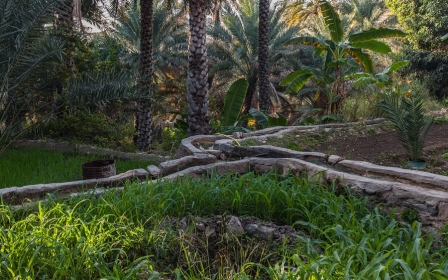Egyptian archaeologists unveil new tomb of Old Kingdom priestess

Egyptian archaeologists on Saturday proudly unveiled the tomb of an Old Kingdom priestess adorned with well-preserved and rare wall paintings.
Antiquities Minister Khaled al-Enany told reporters that the tomb on the Giza plateau near Cairo was built for Hetpet, a priestess to Hathor, the goddess of fertility, who assisted women in childbirth.
The tomb was found during excavation work in Giza's western cemetery by a team of Egyptian archaeologists led by Mostafa Waziri, secretary general of the Supreme Council of Antiquities.
The antiquities ministry said the cemetery houses tombs of top officials from the Old Kingdom's Fifth Dynasty (2465-2323 BC), and that several have already been dug up since 1842.
Such scenes are rare ... and have only been found previously in the (Old Kingdom) tomb of 'Ka-Iber
- Mostafa Waziri, secretary general of the Supreme Council of Antiquities
The newly discovered tomb "has the architectural style and the decorative elements of the Fifth Dynasty, with an entrance leading to an 'L' shaped shrine," the ministry said.
"The tomb has very distinguished wall paintings in a very good conservation condition depicting Hetpet standing in different hunting and fishing scenes or ... receiving offerings from her children," it said.
The paintings also show scenes of musical and dancing performances as well as two scenes featuring monkeys - domestic animals at the time - one picking and eating fruit and the other dancing in front of an orchestra.
Waziri told AFP the paintings were unusual.
"Such scenes are rare ... and have only been found previously in the [Old Kingdom] tomb of 'Ka-Iber' where a painting shows a monkey dancing in front of a guitarist not an orchestra," he said. That tomb is located in Saqqara, a necropolis about 20km south of Cairo.
Enany told reporters the new tomb includes "a purification basin on which are engraved the name of the tomb's owner and her titles".
"A German expedition had found in 1909 a collection of antiquities carrying this lady's name, or a lady who has the same name, and these antiquities were moved to the Berlin museum at the time," he said.
"And 109 years later, we find this tomb that carries Hetpet's name."
Waziri said archaeologists will continue to excavate the site and hope to make new discoveries.
Last year, Egyptian archaeologists unearthed several mummies, colourful wooden sarcophagi and more than 1,000 funerary statues in a 3,500-year-old tomb near the city of Luxor hailed as an "important discovery".
Antiquities officials had initially said six mummies along with partial remains were discovered near the southern city but said they had later identified two more mummies.
"There are 10 coffins and eight mummies. The excavation is ongoing," Mostafa Waziri, the head of the archaeological mission, told AFP.
Middle East Eye propose une couverture et une analyse indépendantes et incomparables du Moyen-Orient, de l’Afrique du Nord et d’autres régions du monde. Pour en savoir plus sur la reprise de ce contenu et les frais qui s’appliquent, veuillez remplir ce formulaire [en anglais]. Pour en savoir plus sur MEE, cliquez ici [en anglais].





